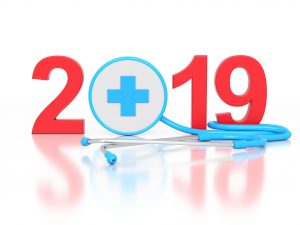For a culture of healthcare consumerism to grow, healthcare will have to start looking and feeling like other consumer-driven industries.
A key tenant of the healthcare consumerism movement is patients taking on increasing amounts of risk for their healthcare outcomes, thus decreasing overall healthcare spending for payers and providers. We see this taking shape in the form of more high deductible health plans. But there is one key component that is missing at the moment for consumerism to reach critical mass: price transparency.
The fact is, consumers can’t commit to paying for something without knowing how much it actually costs. Healthcare prices are notoriously difficult to attain, even after many states implemented laws that require pricing tools to be available to healthcare consumers. Some argue that this dearth of transparency leads to a lack of trust in healthcare providers and payers, with consumers believing there is little to no rationale behind healthcare pricing.
Upfront estimates can also be difficult to come by due to providers themselves not knowing the cost of procedures. But those estimates are available in other countries, such as France, where it is required information to be provided for patient’s facing out-of-pocket costs.
Health Insurance Complicates Things
As the previously mentioned high deductible plans have healthcare consumers considering the cost of care more than ever before, they are looking for price transparency to help guide their decisions. According to a study from HealthEdge, 88% of consumers desired more transparency from insurers in 2016.
The problem is that pricing is complex. In the end, a significant percentage of procedures are not what analysts call “shoppable” and vary in price between providers and payers. A study from the peer-reviewed Journal of American Medical Association showed that prices can vary by a factor of five for some services. That can be the difference between a $200 bill and one for $700.
Adding to the confusion, prices for uninsured patients are wildly different than for those who are insured, meaning prices published on a price transparency site may mislead consumers. Additionally, prices from one insured person to another will vary due to contracts negotiated by their providers, health networks and insurers.
Taking Aim at Health Transparency Goals
A recent article published in the New England Journal of Medicine highlighted four goals for price transparency. For each goal, it examined the core audience, type of price information to be conveyed, the mechanism by which the information is shared and how to measure its effectiveness.
The four goals are as follows:
- Do right by patients: By showing out of pocket costs for treatment before a patient receives care, they are more aware of their costs up front, thus creating increased trust in the healthcare system, which is a measure of success.
- Lift the veil: Focused on employers, policymakers and journalists, this goal would show the total cost of care either by service or episode. This will expose high priced providers and allow health plans to negotiate lower prices or exclude them from their networks.
- Facilitate price shopping: Help consumers compare prices between providers so they can find treatments that reduce their out of pockets and decrease overall healthcare spending.
- Help providers ensure patients can afford care: Help providers display costs at the initial provider-patient interaction. The hope is that this will increase conversations about the value of care and optimize testing and treatment alternatives.
These goals outline ideal scenarios for future price transparency legislation and tools, but what about efforts that are already in motion?
Transparency Websites and Patient Engagement Tools
An article from The New York Times in 2016 outlined how price transparency websites and apps were readily available from health plans, but only small percentages of their customers used them. Part of this could be that few people know they exist, but another problem is that, for many healthcare consumers, decisions are largely influenced by physician recommendations. Value may be perceived as cheap or cost perceived as less important than quality.
Price transparency tools typically only examine outpatient or elective procedures, since emergency or inpatient procedures are not something patients prepare for.
One strategy to get prices in front of patient eyes is to connect it to patient portals or any site where patients pay bills online. Many portals already have cost estimate tools and the simplicity of accessing a portal or other patient engagement tools such as chat bots or educational apps to see pricing could help more patients see their costs up front. Additionally, prices could be individualized as the data within is more reflective of provider-payer contracts.
On the pharma side, medication price transparency could impact a patient’s decision-making process on whether to fill a prescription. Showing them lower price alternatives could help more patients fulfill treatment recommendations.
In March, Surescripts announced its Real-Time Prescription Benefit program and expanded Prior Authorization options. The company said in a statement that it would partner with “six electronic health records (EHR) companies, including Allscripts, Aprima, Cerner, Epic and GE Healthcare, and is leveraging information from pharmacy benefit managers (PBMs) CVS Health and Express Scripts to deliver patient-specific benefit and price information to providers in real time at the point of care.”
While price transparency tools are improving, the next steps for improvement are to keep out-of-pocket costs data up-to-date with current trends in healthcare and to marry that data with quality care metrics in a way that is easy for consumers to understand and use in making decisions.



